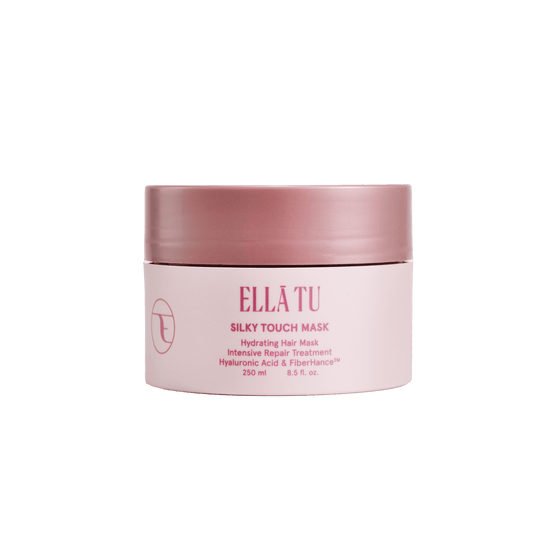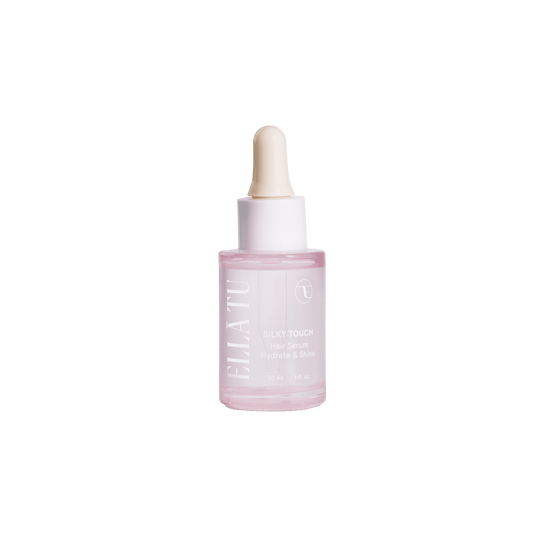Your hair is not just an accessory; it's a reflection of your overall well-being. Healthy hair is about more than just aesthetics; it's about the strength, texture, and vitality of your locks. In this blog post, we will delve into the world of hair health, answering critical questions such as "What is hair health?" and "How to maintain healthy hair." We will also explore how healthy hair should look and feel, offering in-depth tips and tricks for maintaining your hair's vibrancy and strength.
What is Hair Health?
Hair health encompasses a range of factors, including the strength, texture, and appearance of your hair. It's not just about looking good; it's a reflection of how well you care for your body, from the inside out. Maintaining hair health requires a combination of lifestyle choices, dietary habits, and proper hair care routines.
How Should Healthy Hair Feel?
Healthy hair should feel incredibly soft, smooth, and manageable. It should be free from excessive dryness, brittleness, and split ends. If you run your fingers through your hair, it should glide effortlessly, without roughness or tangles. Achieving this silky texture involves taking specific steps in your hair care routine.
Use a gentle shampoo and conditioner: Select products that are suitable for your hair type. Avoid harsh chemicals like sulfates, which can strip natural oils and leave your hair feeling dry and brittle. Choose sulfate-free options for a gentler cleanse.
Deep conditioning: Consider using a deep conditioner or hair mask at least once a week to replenish moisture and maintain a silky texture. Look for products that contain hydrating ingredients such as argan oil, shea butter, or coconut oil.
Reduce friction: Use a wide-tooth comb or a specialized detangling brush when styling your hair. These tools help prevent damage and breakage, leaving your hair feeling smooth and tangle-free.
How Healthy Hair Looks
- Shine: Healthy hair has a natural shine to it, without appearing greasy. The cuticles lie flat, allowing light to reflect off the hair's surface. To enhance shine, consider using a shine-enhancing serum or oil sparingly.
- Thickness: Healthy hair is typically thicker at the roots and gradually tapers down towards the ends. If you notice your hair thinning, consult a healthcare professional to identify underlying causes and appropriate treatments.
- Color: The color of healthy hair appears vibrant and evenly distributed. It should not be faded, discolored, or exhibit noticeable variations due to damage. Protect your hair from fading by using color-protecting products and minimizing exposure to UV rays.
- Smooth Texture: Healthy hair feels smooth to the touch and is free from frizz or roughness. To maintain this smooth texture, avoid excessive heat styling and consider using a leave-in conditioner or anti-frizz serum.
How to Maintain Healthy Hair
- Balanced Diet: A well-balanced diet that includes essential nutrients like protein, vitamins, and minerals is crucial for healthy hair. Incorporate foods like eggs, salmon, nuts, and leafy greens to nourish your hair from within.
- Gentle Hair Care: Use mild shampoos and conditioners that suit your hair type. Avoid excessive washing, as it can strip your hair of natural oils. Be gentle when detangling your hair to prevent breakage.
- Heat Styling: Limit the use of heat styling tools like flat irons and curling wands. When using them, apply a heat protectant to minimize damage. Consider air-drying your hair whenever possible.
- Regular Trimming: Getting your hair trimmed every 6-8 weeks helps prevent split ends and keeps your hair looking fresh and healthy. Regular trims also promote healthy growth.
- Hydration: Stay hydrated by drinking plenty of water to keep your hair and scalp moisturized. Dehydration can lead to dryness and brittleness.
- Stress Management: Manage stress through relaxation techniques, as high stress levels can lead to hair problems. Engage in activities such as meditation, yoga, or deep breathing exercises.
- Avoid Harsh Chemicals: Minimize the use of harsh chemical treatments such as perms and bleaching, which can damage your hair. If you choose to use these treatments, consult a professional stylist.
- Protect from UV Rays: Use UV-protective products and wear hats or scarves to shield your hair from the sun's damaging rays. UV exposure can lead to color fading and dryness.
Healthy hair is a reflection of your overall well-being, and it's achievable through a combination of lifestyle choices, dietary habits, and proper hair care routines. By following a balanced diet, adopting a gentle hair care routine, and taking steps to protect your hair from environmental damage, you can ensure that it looks and feels its best. Remember that maintaining healthy hair is a long-term commitment, so be patient and consistent with your hair care practices, and you'll be rewarded with beautiful, vibrant, and strong locks.









